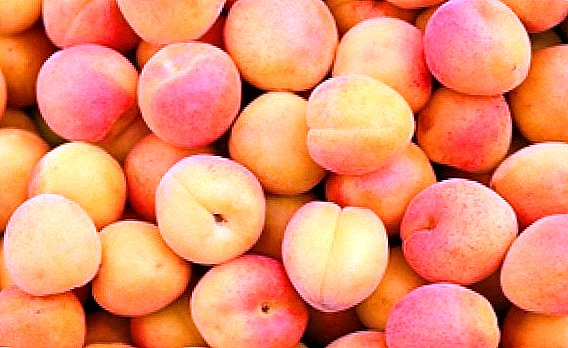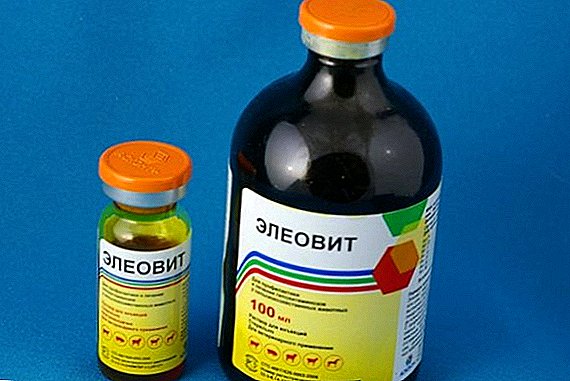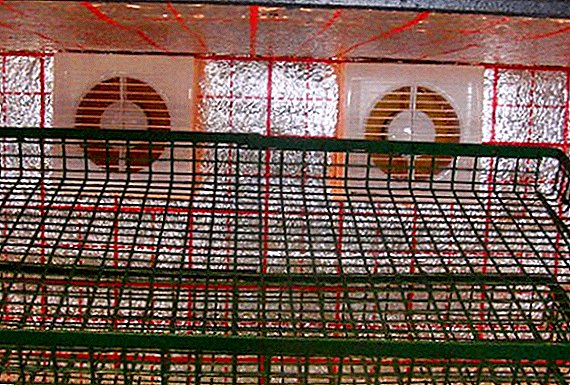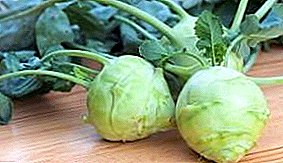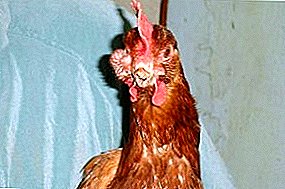
The simplest microorganisms can cause a severe infectious disease, sinusitis, during the chicken family, which makes it difficult to recognize.
Symptomatology, similar to laryngotracheitis, chlamydosis and a variety of serious chicken diseases, does not immediately give a clear definition of the disease. And the delay, sadly, is like death.
What is chick sinusitis?
In most cases, the onset of sinusitis is characterized by a sore throat, followed by discharge from the nose, hoarseness in the voice, and swelling of the sinuses.
The most susceptible sinusitis poultry is considered to be more turkeys. Of the wild birds that have recently become domesticated, pheasants and wild turkeys are sick with sinusitis.
 With sinusitis, concomitant diseases occur. One of them, the most dangerous for chickens, is a complication of E. coli.
With sinusitis, concomitant diseases occur. One of them, the most dangerous for chickens, is a complication of E. coli.
With a parallel effect on the body of two viruses at once, the death of a bird can be up to 70%.
Surviving 30% after an outbreak of infection may be weakened and susceptible to other diseases.
If there are no complications with secondary infections, then the death rate of the population may increase only slightly or remain at the same level as before the disease.
Causative agent
 The virus that causes sinus in chickens is very similar in properties to Group A virus, which causes influenza in humans, and therefore is very dangerous to the health of chickens.
The virus that causes sinus in chickens is very similar in properties to Group A virus, which causes influenza in humans, and therefore is very dangerous to the health of chickens.
Recall how active and aggressive the influenza A is in the human body, how much it is possible to expect complications from this disease, and how long we get out of the state of the disease.
Here is something similar is happening in the body of a sick chicken, only birds carry infectious diseases even harder and leave them even longer.
And if you take into account the fact that the virus is easily cultured on 9-10 days old embryos, it can be argued that even the unborn chickens do not have any protection against such viruses, so most of them may never see the world.
And those who are “lucky enough” to be born will be born as carriers and will begin from the first days of life or fight the disease, or distribute it in the environment.
In this case, the degree of distribution will depend on the predisposing factors: the state of the microclimate in the house, fluctuations of the virtual virus of the virus, susceptibility of the population. It should be noted that ultraviolet rays or normal heating can finally destroy the virus.
Sources of infection
 A chicken is such a bird that can pick up a virus anywhere.
A chicken is such a bird that can pick up a virus anywhere.
The curiosity inherent in chickens and the desire to peck at something outside the house and outside the yard can sometimes do a disservice to both the bird and its owner.
And such an easily transmitted disease like sinusitis can keep a hen at every turn.
Contact with infected birds, with wild birds (not even full contact, but visiting the places where they stayed, with feathers dropped or underexposed grain remains) is the most accessible and most dangerous source of infection for domestic chickens.
Windborne dust, eggs infected with sinusitis virus, contaminated equipment. Why are there! You can even infect chickens with your own hands, holding the sick bird first and then a healthy one (when transplanting into cages, for example).
Symptomatology
 The first alarming symptom of sinusitis in chickens is wheezing, coughing and yawning, as if the bird wants to free the throat from something unpleasant that creates discomfort.
The first alarming symptom of sinusitis in chickens is wheezing, coughing and yawning, as if the bird wants to free the throat from something unpleasant that creates discomfort.
In addition, sick chickens observed:
- mucous discharge from the nose and eyes;
- eyelid swelling;
- sneezing;
- convulsions;
- bonding feathers on the head.
Trying to free the airways, the bird constantly scratches its nose on a roost or paw. If the disease becomes chronic, the chicken begins to lag behind the rest in growth, and the period of illness extends to two months.
Diagnostics
It is possible to diagnose sinusitis in chickens by analyzing the symptoms in great detail and confirming the analysis with complex laboratory tests.
Treatment
 Like all similar infectious diseases, chick sinusitis is treated with antibiotic drugs.
Like all similar infectious diseases, chick sinusitis is treated with antibiotic drugs.
The most effective among antibiotics for the treatment of sinusitis in chickens is recognized by specialists terramycin.
The drug can be added to the feed, and can be applied by aerosol.
Second treatment option - Adding chlortetracycline to feed or water.
To begin the treatment process should be immediately after when you noticed the first signs of the disease.
It is important to isolate diseased individuals, treat and feed them separately from the herd and remember that even after the active phase of treatment, the virus can remain in the chicken’s body, and the bird can be transformed from a normal individual into a virus carrier that creates a danger to the rest of the house.
Therefore, if you are not sure of one hundred percent recovery of the chicken (and even the most experienced specialist cannot give such a guarantee), then after a 3-7-day course of treatment, the chicken should be sent for slaughter.
Preventive measures
 Prevention of sinusitis is to enrich the chicken diet green feed.
Prevention of sinusitis is to enrich the chicken diet green feed.
Banal tingling of chicken greens can, without exaggeration, save her life.
The presence of a complex of vitamins in the feed, light and clean chicken coop without drafts, the exception of the slightest possibility of domestic birds with wild significantly detract from the probability of infection of chickens with sinusitis.
The conditions of the maintenance of a good host should make preventive measures for infectious diseases of chickens and comply with the prescribed sanitary standards daily and hourly.
If chickens in a large farm get sick ...
 Particularly dangerous and unprofitable is a sinusitis outbreak on a large chicken farm, which contains thousands of poultry heads.
Particularly dangerous and unprofitable is a sinusitis outbreak on a large chicken farm, which contains thousands of poultry heads.
When a sinusitis disease is detected on the farm, it is isolated from the rest on an urgent basis: access to transport is limited to the farm, not to mention sales of the young and of the adult chickens.
Immediately, it is necessary to organize vaccination and disinfection on the farm.
The only way to reduce farm losses is to sell a cured bird for slaughter with the condition that the treatment was stopped two days before slaughter, otherwise the presence of antibiotics will be strongly felt in the meat.
 Small English fighting chickens are birds that can stand up for themselves, despite their size.
Small English fighting chickens are birds that can stand up for themselves, despite their size.Do you know what streptococcosis is and in which birds does it occur? Secure your favorites by learning all about this disease! Read more ...
We will show you how to properly grow pumpkin in the suburbs. Read this.
The delivery of new stock is recommended two weeks after the disinfection of all premises.
The main method of salvation
In principle, it can be called the only one, since they have not yet invented anything else, even though scientists have been working on the invention of a powerful anti-sinusitis vaccine for several years.
And while it is not, to prevent infectious sinusitis is possible only with timely and accurate diagnosis, continuous sanitization and strict control of livestock.




